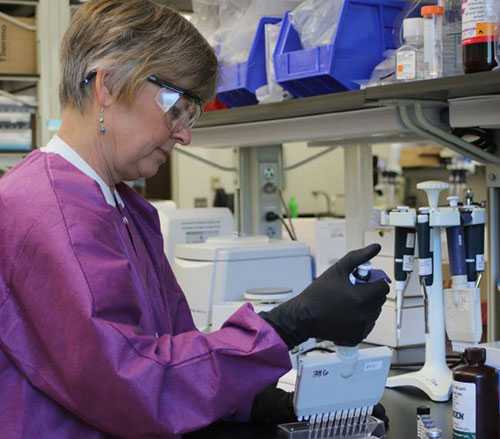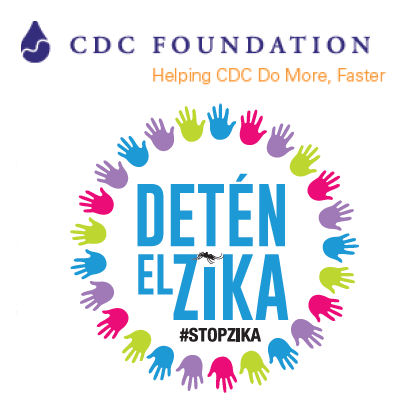NCBDDD Zika Virus Response
![]() Public health professionals frequently investigate new disease-causing germs and respond to emergencies. But an investigation in January 2016 began differently, and NCBDDD staff soon found themselves in a situation not seen in modern times. Zika virus, which previously caused pretty mild disease, was found to be causing more serious consequences, particularly, birth defects.
Public health professionals frequently investigate new disease-causing germs and respond to emergencies. But an investigation in January 2016 began differently, and NCBDDD staff soon found themselves in a situation not seen in modern times. Zika virus, which previously caused pretty mild disease, was found to be causing more serious consequences, particularly, birth defects.
The Beginning
Scientists discovered Zika virus and its mild symptoms decades ago. In the years since, there were two small outbreaks of the virus in humans, but none as widespread as the 2015/2016 outbreak in the Americas. In late 2015, troubling reports began to appear from Brazil; increased numbers of birth defects of the brain and cases of Guillain-Barré syndrome were occurring in regions with Zika outbreaks. Was Zika causing these severe health outcomes? Was there something else causing this increase in birth defects?
NCBDDD staff consulted with colleagues in the United States and outbreak countries to better understand this mystery. On January 22, 2016, CDC activated its Emergency Operations Center (EOC). The goal of the emergency response was simple: protect mothers and their babies by increasing awareness of Zika and helping individuals and communities understand what they could do to decrease the chance of Zika virus exposure. However, the journey to get to that goal has been full of challenges.

Solving a Mystery
Staff from NCBDDD and other Centers in CDC worked day and night to answer the question: “Is there a link between Zika virus and birth defects?” Pieces of evidence began to form a more complete picture. On April 13, 2016, CDC published a synthesis of the evidence concluding that Zika virus infection during pregnancy is a cause of microcephaly (small head and brain) and other severe fetal brain defects.
On any given day, several hundred CDC staff were assigned to the emergency response; many remained at the Atlanta headquarters, while dozens deployed to states, U.S. territories, and other countries. NCBDDD staff worked numerous strategies throughout the emergency response, including sharing information with the public, learning more about how Zika virus affected people, and establishing partnerships with groups beneficial to the mission.
Protecting Women and Babies
Many of the NCBDDD volunteers were assigned to the newly formed EOC Pregnancy and Birth Defects Task Force. Its mission was to reduce the risk and the effect of Zika virus infection in pregnant women, infants, and children. Task Force personnel achieved this goal through numerous efforts, including:
- Conducting populations monitoring and research to collect critical information about Zika virus infection in pregnancy.
- Educating the public, health professionals, communities, public health agencies, and government officials about Zika prevention.
- Conducting research to understand Zika virus infection in pregnancy.
- Providing clinical consultations to healthcare providers caring for pregnant women and technical assistance to public health officials.
- Providing technical assistance, both in the United States and internationally.
- Understanding how to prevent Zika virus infection and how best to communicate that information.
- Preventing Zika-related birth defects by preventing unintended pregnancy.
- Engaging and sharing information with partner organizations, such as the March of Dimes, the American Academy of Pediatrics, American College of Obstetricians and Gynecologists, and Association of Maternal and Child Health Programs.

Understanding Zika’s Impact on Babies
Although Zika is not new, its potential effects on pregnancy are a new phenomenon. CDC leaders and scientists quickly recognized the critical need for information and established the infrastructure to collect data to guide public health action. To monitor the effect of Zika virus infection during pregnancy, pregnancy and infant surveillance was put in place domestically and internationally:
- the U.S. Zika Pregnancy Registry (USZPR),
- the Puerto Rico Zika Active Pregnancy Surveillance System, and
- Proyecto VEZ in Colombia.
The information collected through these systems were rapidly translated into messages for the general public and updated clinical guidance.
The systems provided critical data to answer key questions. For example, data reported to the USZPR from the continental United States and Hawaii suggested that among pregnant women with laboratory evidence of possible Zika virus infection anytime during the pregnancy, about 6% of fetuses and infants had a birth defect potentially related to Zika virus. Of those with a Zika infection specifically in the first trimester, about 11% had a birth defect potentially related to Zika virus.
Crucial Partnerships

Other NCBDDD staff developed and enhanced partnerships with organizations outside of public health. The CDC Foundation (CDCF) worked closely with CDC, focusing its partnership and fundraising efforts on projects for women and their sexual partners in high-risk areas for Zika, including Puerto Rico. Early in the emergency response, CDCF worked with donors to provide products for Zika Prevention Kits to protect pregnant women. Benefactors to CDCF provided several substantial donations, including contributions of condoms, bed nets, and mosquito control tablets, and other partnerships were successful in providing women and their sexual partners in Puerto Rico with improved access to a range of contraceptive methods.
In early summer, with generous private sector funding support, staff from NCBDDD, CDCF, and contractors developed and implemented a multifaceted communication campaign called “This is How We Stop Zika” or “Deten el Zika.” This campaign was aimed at educating pregnant women and communities in U.S. territories about Zika prevention. The highly successful campaign was conducted in Puerto Rico from June to October 2016.
The Consequences of Zika
Through the efforts of NCBDDD scientists, health educators, and communicators, along with others from CDC and public health agencies in the United States and abroad, more information is being discovered daily about Zika virus and its effects on pregnant women, infants, children, and others. As CDC Director Dr. Tom Frieden said, “We need a robust response to protect American women and reduce to the greatest extent humanly possible the number of families affected. We don’t know who those children will be. We don’t know where they will grow up. But anything we don’t do now, we will regret not having done later.”
Preparing For the Next Threat
Birth defect surveillance systems provide crucial information about emerging health threats and their effects on babies. They are essential for connecting affected families to services they need and to ensure that babies are born healthy, children reach their potential, and everyone thrives. At the beginning of 2016, CDC supported 14 states to track birth defects. CDC’s commitment to fight Zika has enabled us to make a significant effort to accomplish activities to strengthen infrastructure for the future.
Before another Zika epidemic hits, CDC and its partners must build on this infrastructure and birth defects expertise to rapidly identify, understand, and prevent emerging threats so every baby in every city, state, and territory is protected. We must better understand the effects of exposures during pregnancy; prevent exposures where possible; and improve care for babies, children, and adults who are living with birth defects.
- Page last reviewed: January 24, 2017
- Page last updated: January 24, 2017
- Content source:


 ShareCompartir
ShareCompartir